#Victorian revival hat
Explore tagged Tumblr posts
Text

Vintage Ladies Black Wide Brim Woven Straw Hat w Hatband & Flower Trim by April Cornell Edwardian Victorian Only $14
#vintage hat#Edwardian hat#wide brim hat#sun hat#straw hat#black straw hat#womens hat#Victorian revival hat#Victorian hat#April Cornell hat#hat#hats#ladies hat#susoriginals#vintage#etsy
2 notes
·
View notes
Text

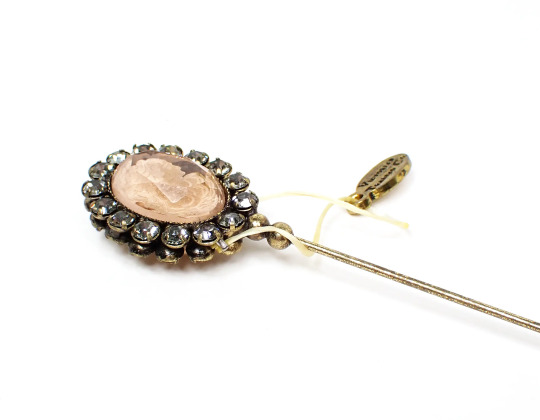

#accessories#hat pin#hat pins#antiqued brass#victorian trading company#victorian style#vintage style#victorian revival#cameo#rhinestone#sharkyswaters
29 notes
·
View notes
Text
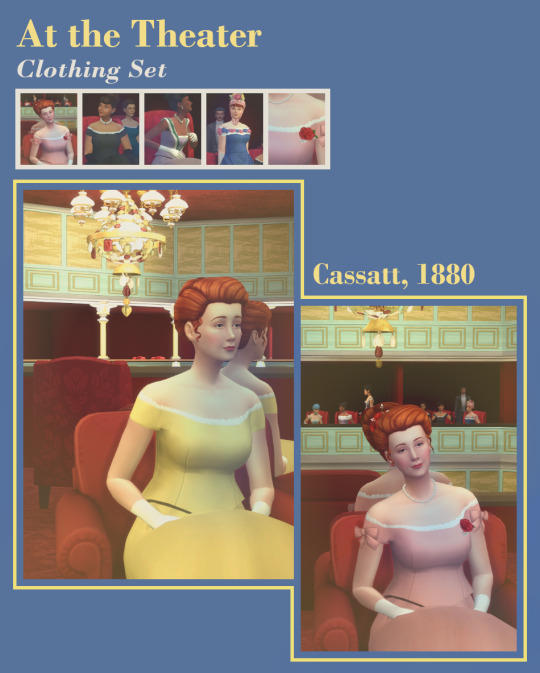
At the Theater
It's me again ! I won't rest easy until I'm done filling the gaps in my 1880s wardrobe and evening wear sure was a big one. So here, come and look at these 1870's / 1880's evening bodices, 4 of them ! You're welcome, just don't use them for gardening or the historical fashion police will be on your back ❤️
More pics and download below
This set was inspired by 2 of Mary Cassatt's paintings : as referenced in the title, At the Theater, 1880 and Woman in a Loge, 1879.
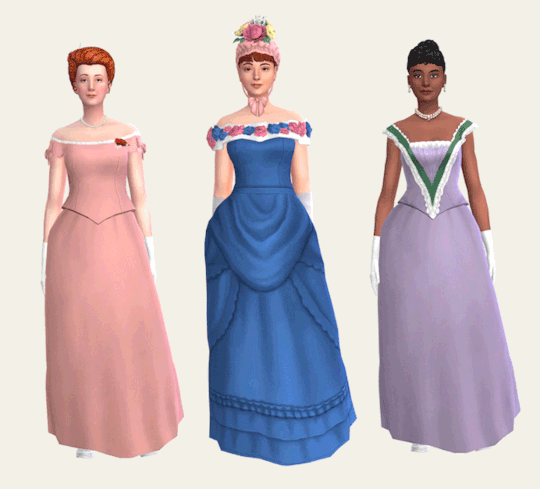
——————— Plain and Bow Bodices ———————

———————————————————————————
These 2 bodice are the ones that are most inspired by Mary Cassatt's paintings, but it's also a style I've seen a bunch in other impressionist paintings of the time. It's a simple sleek bodice with off the shoulder sleeves and a low rounded collar as was fashionable in the late 1870s and early 1880s.
It is specially made to be worn over my bustle skirts. An overlay is included to change the bow's color.
74 swatches for the bodices : 22 solids, 10 floral, 6 plaid, 25 striped & 11 polka dot patterns
22 solid swatches for the bow overlay
the bow overlay is in the right wrist section
Disclaimer :
1 -be aware there will be some distorsion in the armpit area, I did my best but armpit weights are tricky.
2 - the patterned swatches will not be seamless in that same armpit region as you can see below it's quite cluncky :
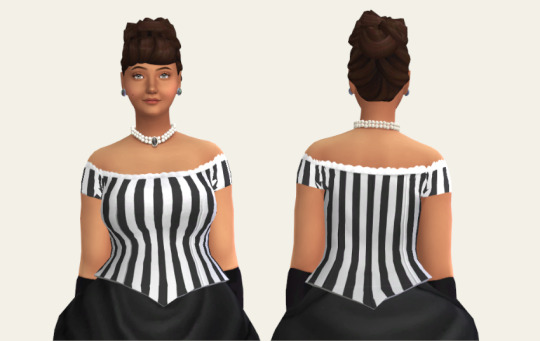
————————— Rococo Bodice —————————

———————————————————————————
This bodice, like the name implies, is inspired by Rococo fashion. The Rococo style dates back to the 18th century and it had a bit of a revival during the victorian era which impacted the fashion as much as the interior decor among other things. This influence, here, results in a squarish neck line and a triangle piece reminiscent of 18th century stomachers.
Like the the plain and bow bodices it has been specially made to be worn over my bustle skirts. An overlay is included to change the trim's color.
74 swatches for the bodice : 22 solids, 10 florals, 6 plaids, 25 stripes & 11 polka dots patterns
22 solid swatches for the Rococo trim overlay
the Rococo trim overlay is in the right wrist section
————————— Flower Bodice —————————

———————————————————————————
This bodice was mostly inspired by some fashion plates from 1880.
Contrary to the 3 others, I made it so it sits under the skirt, so it'll work with other bottoms than my bustle skirt too should you want to.
74 swatches for the bodice : 22 solids, 10 florals, 6 plaids, 25 stripes & 11 polka dots patterns
62 swatches with various color combinations for the flower overlay
the flower overlay is in the right wrist section
—————————— Boutonnière —————————

———————————————————————————
In addition to the flower accessories from my previous set, here is a boutonnière that sits lower on the chest to work with lower neck lines. Contrary to my previous boutonnière, this one is also compatible with necklaces. Like my other flower accessories, this is a pretty timeless accessory as evidence by the picture below.
Once again this is an edit of @the-melancholy-maiden's Hair Flowers Through the Ages Part 2 thanks to her very open TOU.

not compatible with hats
in the nose piercing section (so that it's compatible with necklace)
51 swatches : the-melancholy-maiden's original 29 colors and my 22 colors
available for female frames
———————————————————————————
Download : dropbox — simfileshare
———————————————————————————
And as a little bonus some of my main reference pictures :

#my cc#ts4cc#ts4 historical#ts4 clothes#ts4 accessories#sims 4 historical#sims 4 clothes#sims 4 accessories#maxis match#decade challenge#1880#clothes#timeless#accessories#teen#grown up#1880s Impressionism Sets
302 notes
·
View notes
Text
I’m yelling into the void a bit more about Don’t Starve, don’t mind me. Specifically about Wilson, his medical know-how, his weird relationship with death, and the origin of his Forbidden Knowledge.
Let’s start with the easy one, Wilson being medically trained.
To start, Wilson’s quote for the Peg Leg.

Then in the Forge, Wilson’s special ability is to revive his teammates twice as fast with more health.
Wilson’s Victorian Skin is an old-timey doctor, even mentioning the four humors (even if that practice was far outdated by the Victorian Era).
I remember once seeing a quote about Wilson getting kicked out of a school for setting something on fire, but take that with a grain of salt because I am struggling to find it.
Now onto Wilson’s weirdness with death of his fellow man.
It’s clear the Constant has left him quite jaded with death as a concept, which is very fair.
But you cannot tell me that a man with a normal view of death would find a skeleton under the floorboards of his new house and just…put the boards back. Or hell, that skeleton is very likely to be the one we see strung up in Wilson’s lab in the very first short!
There’s also Wilson’s quote for Skeletons from Don’t Starve classic:

As well as his disregard for the sanctity of graves.

So yeah. He isn’t normal about human death, just like how he isn’t exactly normal about science.
Wilson is confirmed to be the creator of several items that everyone is able to craft and use.
Obviously the Meat Effigy, but it doesn’t stop there.
Maxwell isn’t particularly enthused about the Think Tank:

The Fire Pump is bemoaned to be his:


The Booster Shot is another item he’s very likely to have made, seeing as he’s the only one truly enthusiastic about it. Further connects him to his medical know-how, as well.
From the Survival Tips, Wilson is also very likely to be the one to have made the first Telltale Heart.
Revive: “We nearly lost one of our numbers today. In a mad daze I created…something…that managed to pull our friend back to the land of the living, but…whatever it was, I fear I cannot rightfully say it was within the realm of science…” -W
Gardeneer: “I’ve finally perfected my design for an ingenious (if I do say so myself) device that stores important garden-based knowledge. Certain naysayers might point out that it looks like nothing more than an overturned flowerpot worn on the head…some people simply don’t have an eye for science.” -W
The tips are (almost) all signed with a W, but it’s clear who wrote these ones, especially since Wilson wore the Gardeneer hat during the Reap What You Sow trailer.
That hat leads me to my next point. It is something that Wilson made, he invented it.
Then tell me why you are able to upgrade it at the Ancient Pseudoscience Station, when literally everything else you can do at it is craft fully ancient artifacts?
And doesn’t the storage of knowledge sound eerily familiar? Such as…

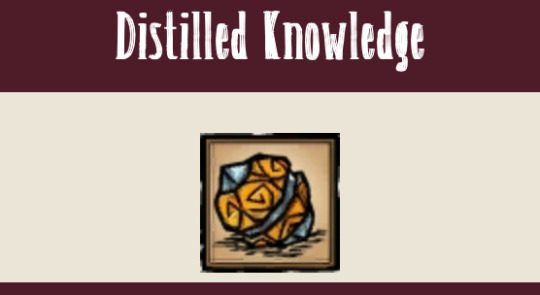
Whatever depths Maxwell snagged Wilson’s Forbidden Knowledge from, it definitively has origins with the Ancients.
Which…
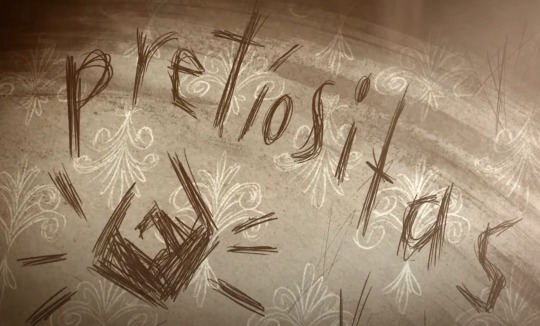
…is quite concerning.
#dst#dont starve#dont starve together#dst wilson#wilson percival higgsbury#character analysis#yeen babbles#i wrote this at midnight just like the last one lol#thank you for reading my dumb rambles
102 notes
·
View notes
Text
Alastor - Historical Trivia And Headcanons

Alastor was a mixed-race Creole man living in New Orleans, and was in his 30's/40's when he died in 1933. We don't know much else about him, but historical context can provide us with possible additional details:
The population of New Orleans in 1930 was 458,762, more than it is now. 27.2% of the people were black, 3.1% were foreign-born, and roughly half of America's bipoc population was unemployed thanks to the Great Depression. New Orleans' original Francophonication was still strong, and it was common to run into locals who only spoke French dialects (Cajun French, Louisiana Creole). The city has had a huge Chinatown, a small Little Italy, and multiple other districts known for their immigrant African/colonized French cultures.
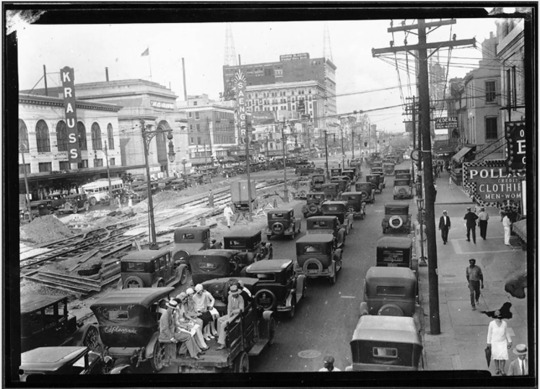
The Jim Crow laws were heavily enforced, as was the 'One Drop' rule. If Alastor was a mixed race black man, he would not have been able to attend a white school, use the same public transport, and would have shopped at black-local stores and restaurants under threat of violence. If he was mixed with any other race, some Jim Crow laws didn't apply, but state or city laws might specify differently.
Just because Alastor wears a suit, it doesn't mean he was rich in life. Radio personalities often didn't earn a fortune. Unless he owned his own broadcast, he was paid by a private company for long shifts of hosting music, news, and radio plays. In 1930, 40% of households owned at least one radio, which means that a popular radio host would have been easily recognized.
If he was in his late 30's in 1933, he might have fought in WW1, so long as he was over the age of 21. Some cities gave veterans small benefits, or encouraged the community to give them jobs. This often did not include veterans of color.
New Orleans was famous for being one of the least Christian cities in America, thanks to its unique immigrant and slave population. Haitian-based faiths and practices (such as voudo), indigenous cultures, Asian Buddhism, and atheism were common. But Christianity was still the official, law-enforced religion. Schooling involved reading the Bible, laws were sworn to Jesus, etc.
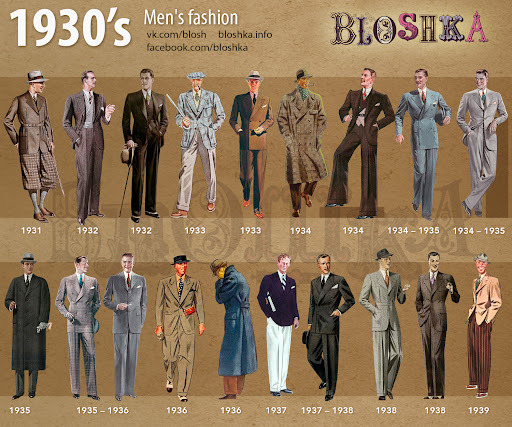
Alastor's outfit in Hazbin Hotel isn't very accurate to real-life American men's fashions of the time. Back then, deviating from the norm with the smallest detail would have stuck out like a sore thumb - like his white-lined lapels. Men always wore a hat. They were allowed to go without a waistcoat, but not a jacket. Belts were becoming more popular than suspenders. The silhouette was bulkier than the slimmer, Italian cuts of our modern times, especially the pants. Hair was kept short, and oiled down in a side part. Americans preferred the clean shaven look. Ties were essential unless you were a blue-collar laborer. Colors were almost universally muted neutral tones for everyday wear. The most colorful textiles for men were sporting outfits, like a tennis jacket.
If Alastor was a middle-class single man, he likely would have lived in an inner-city apartment, in an ethnic neighborhood. He probably didn't own a car, and took public transit like the streetcars. If he owned a house, it would likely have been an inheritance, and even the more opulent houses of the time would have looked small and plain to our eyes.
Because of the Great Depression, unmarried men were becoming the norm, rather than the exception. Men of the community who were sought after but remained single were suspect to gossip, but less ire than you might think; in the '30s, American queer culture was going through a very sharp revival, escaping the rigid Victorian era and before the puritan 40's/50's. But as a mixed-race man, it may have been illegal for a white woman to marry him, as the Jim Crow laws forbade the marriage of white people and Black/Asian people.
A middle class city household would have had electricity, gas heating, indoor plumbing, but may not have had running taps or a gas stove. Even with decent means, Alastor might have been using a potbelly woodburning stove, a dry sink/washbasin, wooden bathtub, and did his own laundry instead of sending it to the neighborhood laundresses. He may or may not have bothered with an icebox. Fresh groceries needed to be cooked and eaten soon, as things like pasteurized milk or store refrigeration wasn't a thing.
If he had enough money, then he almost certainly hired maids or other servants. Whether the maid came over just once a week, or did the shopping and laundry every other day, hired help was much more common back then, especially if he had no wife.
The most popular musicians in 1933 were Bing Crosby, George Olsen, and Leo Reisman. As you might have noticed, it was trendy for the lead singer to be backed by an orchestra, not a 'band' of just four other people like today. The most popular radio shows were Dick Tracy, Sherlock Holmes, and Doc Savage. They were recordings the radio station would buy and then broadcast, or sometimes the actors were live on the air. The radio host was usually not the journalist - the production team was responsible for writing his script.
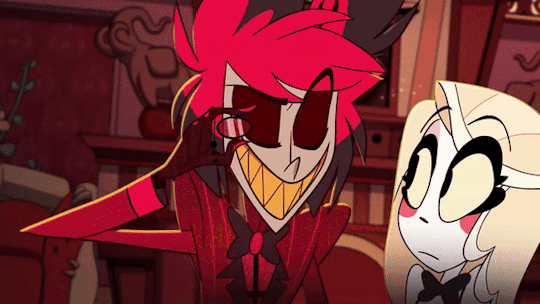
#alastor#alastor the radio demon#hazbin hotel#hazbin alastor#alastor headcanons#hazbin hotel headcanon
115 notes
·
View notes
Note
i am so c o n f u s e d
ive been seeing u reblogging/talking abt the gilded age among a couple others of ppl I follow/talk abt JA and like............ITS LOOKS PRETTY. SEEEMS LIKE ITS A VICTORIAN ERA THING WHICH IS NICE. but but would it be as inapp as bridgerton?? I can just skip through fucking scenes so I can look at the prett dresses but if theres outright fucking itd be age inapp BUT I need smth to watch while crocheting and this seems like the perfect kinda trashy show to watch
so so as a person whos seen it like should i watch it or not? 😭😭
It’s set in 1882 in the first season and 1883 in the second! It’s very mild, in terms of sexual content. Clothed making out between George and Bertha Russell and then in the second season their son has an ill-advised fling with an older woman that results in them making out while fully clothed and a scene of them chatting in bed while under the covers. I think the most you see is Laura Benanti’s bare leg. ETA: there is a scene in the first season where one character tries to seduce another by being naked in his bed but he gets real mad and immediately makes her get dressed and leave.
It’s a lot of fun, but admittedly it’s fun for me for some very specific reasons. If any of these resonate with you, I’d give it a shot:
1) great costuming
2) nearly every contemporary Broadway star is there to chew on scenery, be witty, and wear hats
3) ridiculous gilded age nonsense where ultra-rich robber barons and “old money” New Yorkers fight over who gets invited to what party. The overarching plot of the second season is about the construction of the Metropolitan Opera House
4) neat subplots featuring genuinely cool female historical figures who accomplished an incredible amount given the societal constraints under which they existed. Last season there was a long subplot about Clara Barton founding the Red Cross and this season there’s a subplot about the female engineer who was actually responsible for constructing the Brooklyn Bridge instead of her husband
5) fantastic scenery
6) a look at the Black elite of New York at the time— a group I didn’t know much about until this show
7) Nathan Lane giving one of the strangest and funniest performances of his long and varied career.
8) on location shooting at big Gilded Age mansions in New York State and in Newport, Rhode Island. The house belonging to the character played by one of my fave Broadway prima donnas, Kelli O’Hara, is actually Lyndhurst House, the actual Gothic Revival mansion of actual Gilded Age robber baron Jay Gould.
9) an insanely high props budget that they use to buy such outlandishly delightful things as penny-farthing bicycles and magic lanterns
Is it a good show? Honestly, I don’t know if I can answer that question.
Is it great if you’re a musical theatre fan who enjoys being able to say, “oh my god that’s Douglas Sills from The Scarlet Pimpernel and Little Shop of Horrors playing the Russell’s chef!” Yes.
41 notes
·
View notes
Text
Lucía Torres

[How she looks normally]
Lucía is the older sister of Tomás Torres. Her and her brother were raised by their very wealthy parents in the mid 1800s, both parents are no longer alive due to... reasons. Both were corrupt people, and that trait passes onto Luíca and not Tomás.
Lucía was the favorite child of her parents, while Tomás was barely even acknowledged let alone properly cared for by them, mainly being raised by the workmen and maids on his family property.
Due to her preferential treatment by her parents and picking up on their bad behavior, she gained a superiority complex towards her brother and anyone else she deemed lesser than her, be in money or other characteristics. Tomás has disowned his sister both privately and publicly and continues to do so when asked about her.
She didn't live in Blood Moon Lagoon alongside her brother, but lived in a different state entirely. She had her sights on a different town and how to gain from it.

[How she looks with makeup on]
She is a very wealthy woman thanks to her providing multiple types of industrial jobs to said town she was eyeing. She claimed that this will help the town to develop faster and become more self sufficient... And the town itself did develop in the architecture and monetary value, but the people remained poor and overworked.
She was regarded by the town folk and the occasional aristocrat as "greedy", and "two-faced". They were certainly not wrong.
She wore the fanciest of clothing and covered herself in makeup to "fit in" more with the higher class of society. Where ever people were present, she was wearing it. She wanted everyone to do the work for her as never had to lift a finger to do work growing up.
She felt as if she was on top of the world... until one day, a group of poker themed bounty hunters came knocking at her door.
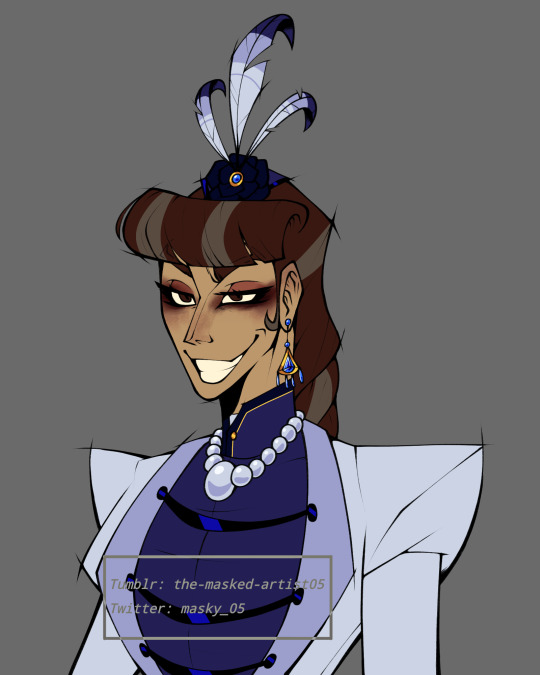
[How she looks due to illness]
She was at odds with this group ever since they arrived at the town. They came due to reports of corruption by the families of the workers. The main one in charge, known and the Ace of Spades, was Kathrine Cawthorne. [I'll explain this group, some of it's members and how each member is placed within it.]
To cut a very long story short, the group was able to take her down along with the worker starting a rebellion against her. During this time, her physical condition worsen thanks to an illness. The workers killed her and ended her reign over them. But before she died, she wanted to destroy Kathrine before she herself goes. She aimed at her fellow colleagues, tried to destroy her relationship with the Ace of Hearts, Cassidy [which didn't work on Cassidy's end but Kathrine thinks she hates her] and even tried to take aim her Kathrine's own family. The threat against her loved one failed to go through and Lucía decided of trying to burn her alive in a building right beside the harbour. This unfortunately did cause Kathrine to catch on fire. This led her to run into the harbour to out herself but ended up drowning. [She was promptly revived by Tempus, this process is explained in this post. In summary for her, she ran off thinking her lover and group hated her due to actions she did out of frustration and stress put on by Luíca and was gone for several years until arriving at Blood Moon Lagoon.]
[[Alright! That's Lucía for you! I have some more ideas for her but I don't want to put it out just as yet. This is just a portion of her design [obviously] but I would like to hear what you all think of her design and what I wrote thus far! Doing the research on her was pretty interesting, with the whole makeup and dress and coming up with a design for her sapphire and gold earrings and lil hat thing [the name just slipped my mind ffs.] It was inspired by some Victorian clothing and style, which I believe she would take some dressing aspects from. Thanks for reading and have a good day/night!]]
#art#my art#digital art#oc#my oc#lucía torres#tomás torres#kathrine cawthorne#wild west#western#i misspelt her name so many times im so sorry ;-;
35 notes
·
View notes
Note
In which decade bloodborne set approximately? I know what this is fantasy and sir miyazaki likes to combine things from different periods but which will most likely be exact decade or multiple decades? I am starting a new hobby, creating historical garments. Today me and my friend were chatting, and i showed her edwardian combinations underwear. You can google it, such i piece of art. My friend also said how Maria would look beautiful in it. But i thought what it is too late for our lady huntress's life to wear it. So what your thoughts on period game set in?
That sounds delightful! Enjoy :)
I don’t think it’s meant to be any specific period with any exactitude. I wouldn’t look at it as a painting, anyway, where one could identify the lace and tell you what portion of the middle class wore this lace during what decade of Victoria’s reign. I think everything is very generally Victorian-adjacent, and not worth niggling over this hat is technically Georgian or this coat is technically Edwardian. The tricorne hat was supposedly falling out of favour by the Napoleonic wars, and yet it’s THE headpiece par excellence; while the Doll’s bonnet puts her a little further in the early/mid 19th. The Cainhurst silhouette is at once strikingly and bizarrely 18th century French, and also not at all. We also know BB borrows A TON from Christophe Gans’ hilarious cringefest Le pacte des loups which is much more overtly pre-(French)-Revolution in aesthetic/costumes.
So to me, there’s no hard and fast rule based on the overarching aesthetic, except maybe “Victorian-adjacent fantasy”. It feel as if the narrative team threw everything in there from Matthew Gregory Lewis’ The Monk (1796) to Stoker’s Dracula (1899) - this goes without even mentioning Lovecraft - and already we are far beyond the length of Victoria’s reign. The same goes for the architecture - while generally Neo-gothic/gothic revival, there is a ton of other European influence as well.
I made a post about this concerning Game of Thrones a little while back, which is to say some of the more brilliant art directors/costume designers will know exactly what they are sourcing overall and then allow themselves a creative freedom above that historically recognisable framework, so the visuals seem at once glaringly familiar yet not constrained to accuracy.
Tldr; you can dress ‘em up however you like.
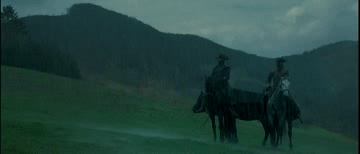
in conclusion watch Le pacte des loups because even if it's a joke the costumes are great and Vincent Cassel is absolutely hammy in it. •‿•
#ask#still going through the ask box#painfully slowly sorry#bloodborne#ask the art historian who is definitely not a costume historian and definitely not specialised in anything pre 20thc.
22 notes
·
View notes
Note
I'm not understanding the queen finding out that Claudia being romantically involved with Undertaker AKA Cedric K. Ross was a bad thing. Were they not in the same society class?
Undertaker's social status
They were not in the same class at all, since Undertaker is a reaper and therefore completely outside the Victorian class system. If he tried to fake being in the upper class, let alone a noble, he would have to dress as he does for the Weston arc.
You'd think that undertakers would be respected in Victorian society, considering how much people typically paid for their services, but they were not. Quite the opposite. Undertakers were considered one of the lowest positions, simply because they were dealing with dead bodies, which was considered somewhat dignified but extremely gross and dangerous. Many resented undertakers because of the high costs of funeral services, but that wasn't really the undertakers' fault. People had come to expect lavish services because it was fashionable... and that is a demand for expensive goods and services, not price gouging.
If you want to point a finger at the person who made lavish funerals so darn fashionable? Point at Queen Victoria. She set the goal, other affluent people made it trend, and the lower classes tried their best to achieve similar results.
Anyway, Undertaker wasn't truly in the same class as the Phantomhives, even if he put on a nice suit and fashionable hat and fancy tie.
But that's not the main reason why the queen wouldn't approve of them being together. John Brown (if no one else) would have informed her that Undertaker is a grim reaper, and the queen wouldn't have approved of that. If you ever watched s2 of the anime, notice that Claude convinces Alois that Sebastian was the one to destroy his village (when it was really Hannah). A possible parallel in manga canon would be that John Brown has Queen Victoria convinced that Undertaker had something to do with Prince Albert's death... or any other number of scenarios that the queen has accepted as fact. Maybe the queen thinks Undertaker collected Albert's soul (even though he wasn't an active reaper by then). Or perhaps she blames Undertaker for what another reaper has done simply because she thinks of him as a representative of the entire reaper organization, and he was unable to retrieve Albert's soul/revive him. Ok, this is getting into major crack theory territory now.
But I do believe that Queen Victoria knows Undertaker is a grim reaper, and that she specifically doesn't want her watchdog to get involved with such entities. Let alone to have children with one. And I believe that it has something to do with whatever John Brown has made her believe. I just don't have the details about that... yet.
I also don't know for sure what Cedric's last name is, but considering Cedric of Rotherwood from Ivanhoe, I tend to think it'll turn out to be more like Rosewood or Rosedale, not Ross. And, based on William T. Spears' "T" coming from a staff nickname for him -- Takaeda, meaning "high branches", a reference to his death scythe -- I think Cedric's "K" might come from an un-divulged (for obvious reasons) staff nickname for Undertaker -- Kama, simply meaning "scythe".
#black butler#kuroshitsuji#undertaker#cloudia phantomhive#claudia phantomhive#undertaker x cloudia#cloudia x undertaker#claudia x undertaker#undertaker x claudia#cedric k. ros#cedric k ros#cedric k ros--#cedric k. ros--#real name#social status#queen victoria#reapers#grim reapers#john brown#minnesotamermaid71#asks#i answer#answered asks#jan 16 2023
51 notes
·
View notes
Text
That post about writers completely re-inventing characters and ignoring continuity and turning them into basically self-insert OC's (which is generally infuriating for fans) got me thinking about times when it actually worked well to totally revamp a character. I think one of the keys is when it's an extremely minor character, and long dead or out of continuity, so fans are less likely to mind. (Readmore, because damn do I ramble a lot.)
Like one of my favorite examples is the Shade, a Silver-Age Flash villain who had a cane who could create shadows:
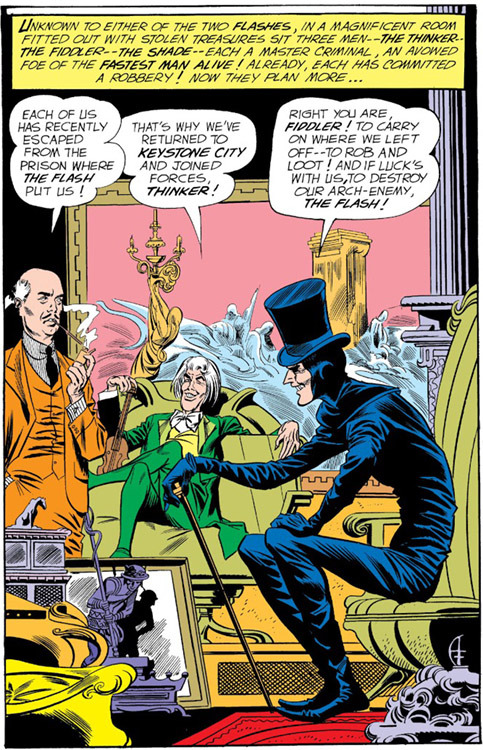
It's the guy in the top hat, so old school that he hung out with The Fiddler.
Shade had largely fallen out of continuity when he was picked up to be a major character in James Robinson's Starman, where he was reinvented as an immortal being from the Victorian era who had gained supernatural powers from a magical accident. No longer needing the cane, this Shade could control and project shadows. Starman's Shade was also a significantly more interesting and complex anti-hero type, who had adopted Opal City as his home and is willing to defend it. He is dark enough to rip people to pieces with his shadows, but winds up helping the good guys more often than not, even if it's sometimes for his own purposes. The series also delves into his past history through the present, fleshing out his past and origins. Also, he got much hotter:
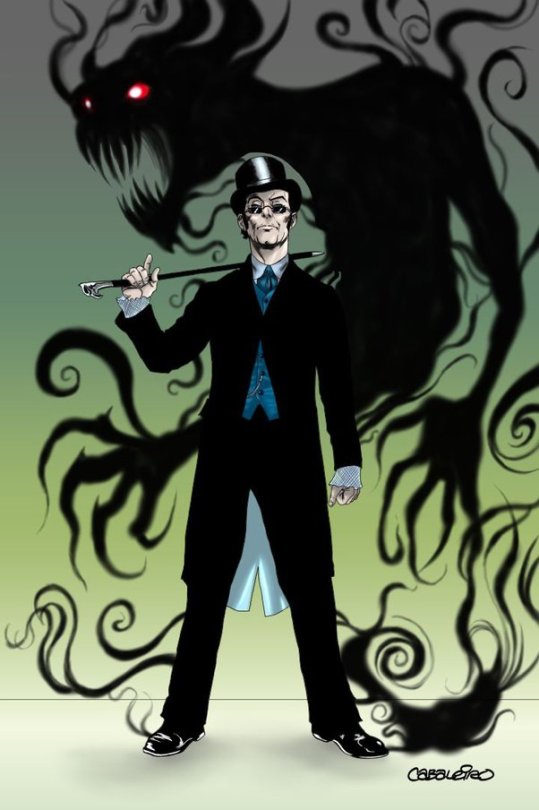
That probably helped, too. This Shade is so different from the original he may as well be James Robinson's OC, but i can't imagine even fans of the original complaining, he's a very cool character whose profile was raised enough in Starman that he got a solo mini-series. He also appeared in the live action Stargirl TV series as the Robinson version of the Shade, playing a similar role as an amoral anti-hero who might be helpful but can't always be trusted.
Of course, I may be biased, because I love The Shade.
Another example where I'm definitely biased is X-Men's Changeling transforming into Morph on TAS. Changeling was kind of an interesting character, as a former terrorist turned good with a last-minute redemption, but his redemption was a half-assed flashback that retconned his death to revive Xavier. He probably would have been a forgotten footnote in X-Men history if he hadn't been pulled out of mothballs and given a personality overhaul to become Morph, a much more fun, heroic and sympathetic character. I think it says a lot of that all the alternate versions of Changeling that appeared in the comics since TAS (AoA and Exiles) have been clearly based on TAS Morph's "wacky shape-shifter" personality, and literally called Morph rather than Changeling. The alternate version has largely eclipsed the original. That being said, it would be kind of interesting to see 616 Changeling resurrected on Krakoa with more of his original personality intact. He could join X-Force for sneaky shape-shifter espionage stuff now that Mystique is busy with the Council and Destiny. If nothing else, it would be funny to see a former criminal be absolutely appalled at Beast's actions in X-Force because "I thought you were supposed to be the good guys!"
There are examples even with bigger name characters, like Bucky Barnes being famously brought back from the dead in 2005 as a mind-controlled assassin. Despite turning Bucky darker and grittier, the revived Bucky has become something of a mainstay of the Marvel Universe, was featured in several movies, and shared a Disney+ series with Falcon in which they were clearly dating. It probably helped that by 2005, Bucky was just famous for being dead, and not many people were reading old comics from the 40's and 50's, so Winter Soldier could over-write teen Bucky.
And of course, there are major overhauls to even long-standing characters that add depth, like Magneto going from a standard 60's villain to a noble-but-misguided terrorist, Holocaust survivor, and old friend of Xavier. I think most people acknowledge that to be a massive improvement on the character that made him far more interesting and complex.
It probably helps when the characters are taken in a "good" direction, although it can be fun to watch people go dark as well. Grim and gritty Bucky was still a largely sympathetic character, he was just "cooler" (and also alive). But I'm pretty sure absolutely no one liked DC villain Dr. Light being retconned as a rapist in Identity Crisis, even if it made him more threatening. (There was a lot to hate about Identity Crisis). I'm also not super-fond of Josh Williamson giving the original Trickster a come-back only to write him as much nastier than he was before, although at least he didn't become a rapist. Never write James Jesse again, Williamson.
Responses are mixed to Moira McTaggert, another long-dead minor character, being retconned as not only a mutant, but a mutant who has been directing and influencing all of the X-Men's history from behind the scenes. Personally, I'm sad to see one of the X-Men's best known human allies turned into a secretive and manipulative mutant, but I could deal with it until Percy turned her into an evil cyborg that wore a Banshee skin-suit. Percy had better keep his claws off Stevie Hunter, one of the few human X-Men allies left alive. (Also she's totally a congresswoman now).
Overall, I think it depends a lot on how long the character has been out of action and how well the writer uses them, and responses will always be mixed. Of course, these positive examples are not meant to justify the tendency of certain writers to take well-known characters with a long established history and completely ignore it in order to write the shallowest and laziest possible version. Everyone reading this probably has a different writer in mind, and you are all right.
16 notes
·
View notes
Text
A Long but Necessary Guide
Hello! I am Soup and this is my History, Anthropology, and Archeology sideblog! Welcome to my current passion, and here are a few things to make your stay a bit easier.
Tagging System
I try to tag in this order and with these details: decade, century/millennium, era/age, continent, region, country, culture, medium, misc.
Example: for a picture of a museum's embroidered Irish wedding dress worn at a lesbian wedding from 1837, I might tag it like this: 1830s, 19th century, Regency, Victorian, Europe, Western Europe, Ireland, Celtic, Exhibit, Embroidery, Queer History, Wedding, Veiled (usually in this order but most likely in any order. I will list multiple places, labels, decades, centuries, and ages/eras as I feel necessary. I will also omit tags if necessary/if no plausible info can be found).
Places are stated as nouns and cultures are stated as adjectives. Example: America not American, but Jewish or Nubian not Jews or Nubia.
Countercultures, societal generas, and established aesthetics count as cultures lmao. (Pirates, Bollywood, Punk, Cottagecore, Cavalier, Goth, Greek Revival, Hanfu, Rococo, Pop Culture, Grunge, Disco, etc.)
Miscellaneous tags so I don't forget:
Bags and Belts
Body Art and Tattoos
Charms and Amulets
Embroidery
Glass and Glasses
Hair
Hats
Jewelry
Makeup
Pajamas and Bathing
Pins and Patches
Socks and Shoes
Technology
Underwear
Veiled
Weapons
Armor
Ceremonial or Religious
Children
Fabric and Textile
Folk Regalia
Momento Mori
Mourning
Uniform
Wedding
Black History
Celtic History
Disabled History
Indigenous History
Islamic History
Jewish History
Maritime History
Queer History
Anthropology
Archeology
Cosplay
Dance
Filmography
Fine Art
High Fashion
Iconography
Theater
Activism
Art Reference
Exhibit
Fantasy (for costumes)
Favorites
Fiction (for fan art or similar)
Meme
Not Clothing (for posts I couldn't resist)
Resources (posts with heavy info or link to other references and sources)
Shopping (for posts with links to purchase items)
Dating Method
This is very important as things maybe get confusing.
This blog will primarily use the Holocene Calendar, in which the current year is 12,023 HE and the Human Era began at the building of the oldest known structure on Earth. The equation is (10,000 + current year) - (date + current year) = Human Era year. So if it's 2023 CE and the object is from 494 BCE, the object is now from 9506 HE.
All CE (Common Era, formally written as AD, the most recent 2000ish years) dates will be referred to by traditional methods and not tagged with a corresponding millennium to save myself the headache: 18th century, 1900s etc . HOWEVER, all BCE dates (Before Common Era, formally written as BC and with numbers going maddeningly backwards) will be instead portrayed by Human Era dates only. Luckily this will only be a problem from the Mesolithic Era and back so I'm not terribly worried about causing confusion.
Example: a picture of an exhibit of a bone necklace from North Italy dated from 3300 BCE might be tagged like this: 5320s, 54th century, 6th millennium, Neolithic, Chalcolithic, Bronze Age, Europe, Southern Europe, Western Europe, Italy, Alps, Exhibit, Archeology, Jewelry. Again, I overlap labels, eras, and regions as I feel necessary.
It seems confusing at first but it actually makes reading history a whole lot easier; rather than everything from before a certain Nazarene being squished together in a confusing hodgepodge of jumbled backwards dates, we now have a clear context of just how long ago an object is from as well as a clear linear view of history. Which of course leads to better appreciation.
Traditional Eras in Human Era Context:
Paleolithic: 2.5 million years PreHE - 0 HE
Mesolithic: 0 HE - 2000 HE
Neolithic: 2000 HE - 5000 HE
Bronze Age: 5000 HE - 8800 HE
Iron Age: 8800 HE - 9500 HE
Classical Age: 9500 HE - 10500 HE
Middle Ages: 10500 HE - 11500 HE
Modern Age: 11500 HE - Present
FINALY: Please note that this is a work in progress, and I only work on it when I want to, so not everything is tagged yet qwq.
Thank you! And enjoy this blog!
3 notes
·
View notes
Text
Western Beauty
Western wear is a category of men's and women's clothing which derives its unique style from the clothes worn in the 19th century Wild West. It ranges from accurate historical reproductions of American frontier clothing, to the stylized garments popularized by Western film and television or singing cowboys such as Gene Autry and Roy Rogers in the 1940s and 1950s. It continues to be a fashion choice in the West and Southwestern United States, as well as people associated with country music or Western lifestyles, for example the various Western or Regional Mexican music styles. Western wear typically incorporates one or more of the following, Western shirts with pearl snap fasteners and vaquero design accents, blue jeans, cowboy hat, a leather belt, and cowboy boots.
Hat
Lawman Bat Masterson wearing a bowler hat. In the early days of the Old West, it was the bowler hat rather than the slouch hat, centercrease (derived from the army regulation Hardee hat), or sombrero that was the most popular among cowboys as it was less likely to blow out off in the wind.The hats worn by Mexican rancheros and vaqueros inspired the modern day cowboy hats.By the 1870s, however, the Stetson had become the most popular cowboy hat due to its use by the Union Cavalry as an alternative to the regulation blue kepi.
Stampede strings were installed to prevent the hat from being blown off when riding at speed. These long strings were usually made from leather or horsehair. Typically, the string was run half-way around the crown of a cowboy hat, and then through a hole on each side with its ends knotted and then secured under the chin or around the back of the head keeping the hat in place in windy conditions or when riding a horse.
The tall white ten gallon hats traditionally worn by movie cowboys were of little use for the historical gunslinger as they made him an easy target, hence the preference of lawmen like Wild Bill Hickok, Wyatt Earp and Bat Masterson for low-crowned black hats.
Originally part of the traditional Plains Indian clothing, coonskin caps were frequently worn by mountain men like Davy Crockett for their warmth and durability. These were revived in the 1950s following the release of a popular Disney movie starring Fess Parker.
Shirt
1950s style Western shirt with snap fastenings of the type popularized by singing cowboys A Western shirt is a traditional item of Western wear characterized by a stylized yoke on the front and on the back. It is generally constructed of chambray, denim or tartan fabric with long sleeves, and in modern form is sometimes seen with snap pockets, patches made from bandana fabric, and fringe. The "Wild West" era was during the late Victorian era, hence the direct similarity of fashion.
A Western dress shirt is often elaborately decorated with piping, embroidered roses and a contrasting yoke. In the 1950s these were frequently worn by movie cowboys like Roy Rogers or Clayton Moore's Lone Ranger. Derived from the elaborate Mexican vaquero costumes like the guayabera, these were worn at rodeos so the cowboy could be easily identifiable. Buffalo Bill was known to wear them with a buckskin fringe jacket during his Wild West shows and they were fashionable for teenagers in the 1970s and late 2000s.
Another common type of Western shirt is the shield-front shirt worn by many US Cavalry troopers during the American Civil War but originally derived from a red shirt issued to prewar firefighters. The cavalry shirt was made of blue wool with yellow piping and brass buttons and was invented by the flamboyant George Armstrong Custer. In recent times this shield-front shirt was popularised by John Wayne in Fort Apache and was also worn by rockabilly musicians like the Stray Cats.
In 1946, Papa Jack Wilde put snap buttons on the front, and pocket flaps on the Western shirt, and established Rockmount Ranch Wear.
Coat When a jacket is required there is a wide choice available for both linedancers and historical re-enactors. Cowboy coats originated from charro suits and were passed down to the vaqueros who later introduced it to the american cowboys. These include frock coats, ponchos popularised by Clint Eastwood's Spaghetti Westerns, short Mexican jackets with silver embroidery, fringe jackets popular among outlaw country, southern rock and 1980s heavy metal bands, and duster coats derived from originals worn in the Wild West. More modern interpretations include leather waistcoats inspired by the biker subculture and jackets with a design imitating the piebald color of a cow. Women may wear bolero jackets derived from the Civil War era zouave uniforms, shawls, denim jackets in a color matching their skirt or dress, or a fringe jacket like Annie Oakley.
For more formal occasions inhabitants of the West might opt for a suit with "smile" pockets, piping and a yoke similar to that on the Western shirts. This can take the form of an Ike jacket, leisure suit or three-button sportcoat. Country and Western singer Johnny Cash was known to wear an all-black Western suit, in contrast to the elaborate Nudie suits worn by stars like Elvis Presley and Porter Wagoner.The most elaborate western wear is the custom work created by rodeo tailors such as Nudie Cohn and Manuel, which is characterized by elaborate embroidery and rhinestone decoration. This type of western wear, popularized by country music performers, is the origin of the phrase rhinestone cowboy.
Trousers
Cowboy wearing leather chaps at a rodeo
A Texas tuxedo comprising a denim jacket, boots and jeans. In the early days of the Wild West trousers were made out of wool. In summer canvas was sometimes used. This changed during the Gold Rush of the 1840s when denim overalls became popular among miners for their cheapness and breathability. Levi Strauss improved the design by adding copper rivets and by the 1870s this design was adopted by ranchers and cowboys. The original Levi's jeans were soon followed by other makers including Wrangler jeans and Lee Cooper. These were frequently accessorised with kippy belts featuring metal conchos and large belt buckles.
Leather chaps were often worn to protect the cowboy's legs from cactus spines and prevent the fabric from wearing out.Two common types include the skintight shotgun chaps and wide batwing chaps. The latter were sometimes made from hides retaining their hair (known as "woolies") rather than tanned leather. They appeared on the Great Plains somewhere around 1887.
Women wore knee-length prairie skirts,red or blue gingham dresses or suede fringed skirts derived from Native American dress. Saloon girls wore short red dresses with corsets, garter belts and stockings.After World War II, many women, returning to the home after working in the fields or factories while the men were overseas, began to wear jeans like the men.
Neckwear
Working cowboy wearing a bandana or "wild rag," 1880s During the Victorian era, gentlemen would wear silk cravats or neckties to add color to their otherwise sober black or grey attire. These continued to be worn by respectable Westerners until the early 20th century. Following the Civil War it became common practice among working class veterans to loosely tie a bandana around their necks to absorb sweat and keep the dust out of their faces. This practise originated in the Mexican War era regular army when troops threw away the hated leather stocks (a type of collar issued to soldiers) and replaced them with cheap paisley kerchiefs.
Another well-known Western accessory, the bolo tie, was a pioneer invention reputedly made from an expensive hatband. This was a favorite for gamblers and was quickly adopted by Mexican charros, together with the slim "Kentucky" style bowtie commonly seen on stereotypical Southern gentlemen like Colonel Sandersor Boss Hogg. In modern times it serves as formal wear in many western states, notably Montana, New Mexico
4 notes
·
View notes
Link
Check out this listing I just added to my Poshmark closet: Bee Chic Enamel Brooch deco antique gold & crystals, pearls pin.
0 notes
Photo

🌟 Revive the Elegance: Merge Wisdom with Fashion 🌹✨ Hey trendsetters, let's journey into the past, where elegance and wisdom intertwine. Embrace the art of breathing fresh life into timeless styles, marrying the grace of yesteryears with the vibrancy of today. 🕰️👗 📜 Wisdom in Wardrobe: Draw inspiration from the classics, where every garment tells a story. Consider the craftsmanship and intentionality of bygone eras. Infuse your wardrobe with pieces that echo the wisdom of timeless fashion. 👒🌟 🎨 Blend of Eras: Play the role of a fashion alchemist, blending elements from different eras into a harmonious ensemble. Mix Victorian charm with modern flair, or pair retro accessories with contemporary silhouettes. Let the past and present dance in seamless fashion. 💃🕺 🌺 Floral Elegance: Channel the romance of vintage floral patterns. Whether it's a classic tea dress or a modern jumpsuit adorned with blossoms, embrace the perennial beauty of florals that transcend time. 🌸🌿 👑 Regal Accents: Elevate your style with regal accents—a vintage brooch, lace gloves, or a statement hat. These timeless accessories add a touch of sophistication and pay homage to the grandeur of eras past. 👒💎 🌈 Color Palette Mastery: Explore the color palettes that stood the test of time. From the muted hues of the Victorian era to the bold colors of the '80s, choose shades that resonate with your spirit and breathe new life into them with a contemporary twist. 🎨✨ So, fashion enthusiasts, let's celebrate the elegance of the past and infuse it with the vibrancy of the present. Your style is a canvas—paint it with the hues of wisdom and the strokes of modernity. 🖌️💖✨ #VintageRevival #FashionAlchemy #TimelessElegance #ModernVintage 🌹🕰️👗
0 notes
Text

~VICTORIAN ERA~
• the victorian era was a large time of change- especially for woman, during this time woman were allowed to have more freedom as england was ruled by a queen. woman had more freedom to do what they like such as go out, vote + more.
^
this website shows all about what the era was like for social change.
• during the victorian era, films only just started to become a big thing- during december 1895.
-films were short and only shown in fairgrounds, music halls or just anywhere a screen could be set up in a darkened room.
-films were often about local scenes/ activities, short comedies, newsworthy events etc.
-films were only in black and white and not very well animated.
https://www.scienceandmediamuseum.org.uk/objects-and-stories/very-short-history-of-cinema#:~:text=The%20first%20to%20present%20projected,film%20printer%20all%20in%20one.
^
this website shows the history of film
•Fashion of this time was very posh. woman often wore tight bodices (e.g. corsets) and long, full skirts. men often wore suits with wide trousers, low collars with bows or ties. this fashion style was often a sign of wealth. People of the lower class would often wear oversized coats, trousers etc and often have no under garments. people of the lower class also often didn’t have shoes as it was a luxury.
•Fashion trends during this time included: crinoline (a stiff fabric with a weft of horse hair and a wrap of cotton or like thread), corsets, petticoats, full skirts, bonnets, top hats, fans, gloves, bustles.
^
this video shows 60 years of victorian fashion trends.
• During this era, there were 4 mourning periods. Periods of mourning happened after Queen Victorias husband died in 1861, she went into deep mourning for 3 years and wore black for the rest of her life.
-during mourning periods, woman could not wear jewellery, they could only leave there home to go to church or for visiting relatives.
-during the 1st period of mourning (which lasted one year and one day), costumes were made out of two pieces- a bodice and a skirt. the main feature of this period was the long, black veil that reached to the waist or to the knees.
-during the second period of mourning (lasted 6 months or to the death), the veil became shorter and they could use it over there heads, they could wear jewellery made out of the deceased hair.
-during the third period of mourning (lasted between 3-6 months), the only thing that changed was the veil, which became shorted then in the second period.
-during the forth period of mourning, or half mourning (lasted between 6 months or to the death), dresses could be designed to latest fashion and only had to be made with half mourning colours such as: grey, violet, lilac, mauve or white.
1 note
·
View note
Link
Check out this listing I just added to my Poshmark closet: NWT Liberty of London Art Fabric Twilly Scarf.
0 notes